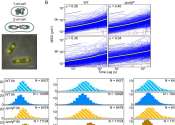New study reveals novel approach for combating 'resting' bacteria
Most disease-causing bacteria are known for their speed: In mere minutes, they can double their population, quickly making a person sick. But just as dangerous as this rapid growth can be a bacterium's resting state, which ...






